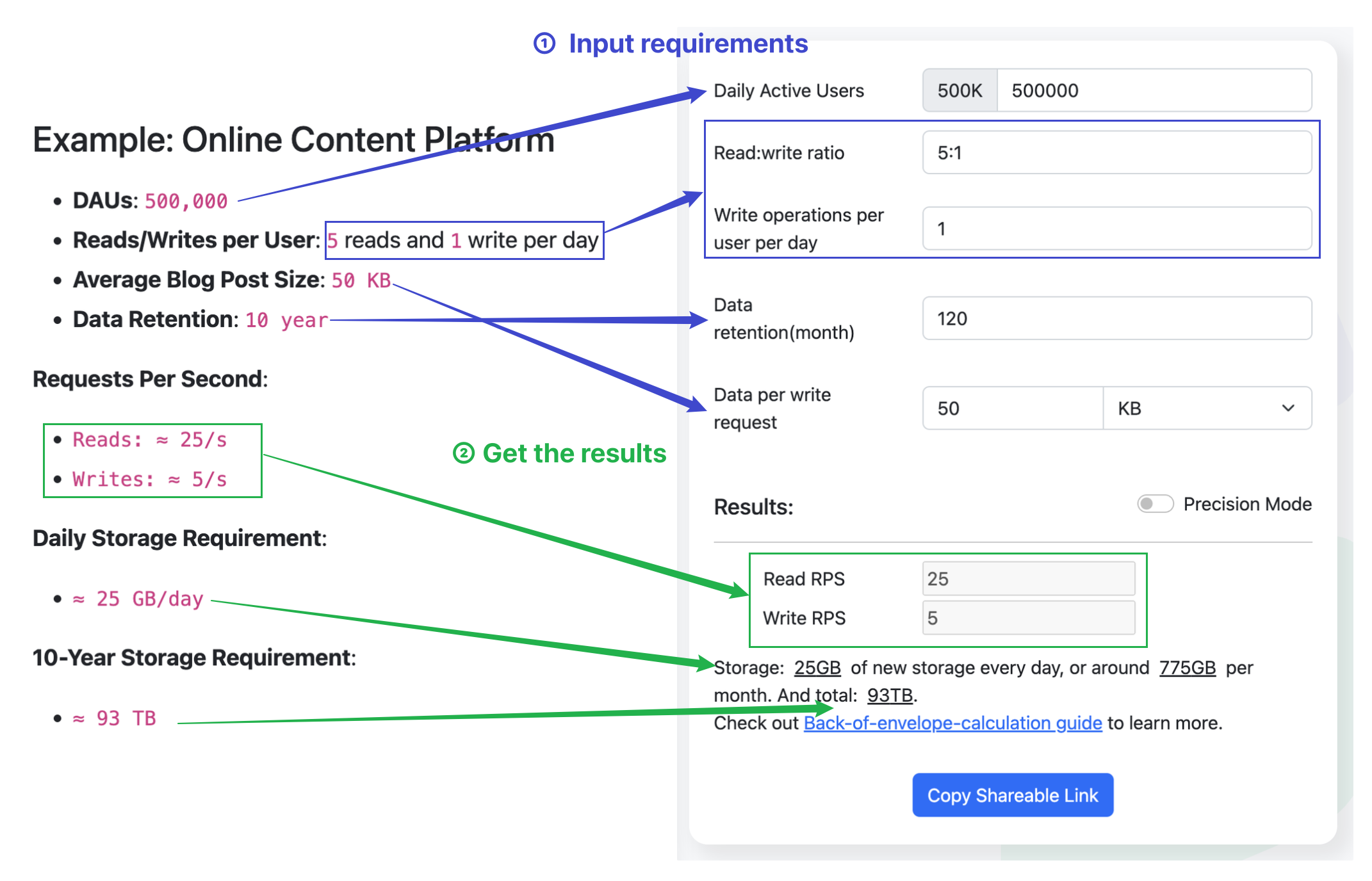Back-of-the-envelope Resource Estimation
Estimating resources for system design involves understanding the load parameters like daily active users (DAU) and translating them into computing and storage needs. It's crucial for identifying performance bottlenecks and designing scalable systems.
Key Load Parameters
-
Daily Active Users (DAU): Translates to requests per second for engineering calculations.
-
Requests Per Second: Helps estimate database and cache size requirements.
-
Read/Write Ratio: Influences the design of read and write paths, affecting decisions on caching, replication, and data store selection.
-
Concurrent Connections: Critical for applications like chat services, requiring strategies for managing web socket connections.
Estimating Storage and Performance
Design Considerations Based on Load
- High Read/Write Ratio: Implement caching and replication for efficient read operations.
- High Write/Read Ratio: Optimize for write operations using high-throughput data stores and eventual consistency.
Throughput and Latency
- Throughput: Measures system capacity to handle data or transactions over time. Essential for assessing system performance.
- Latency: Time taken for a request to travel from sender to receiver and back. Critical for real-time applications.
Response Time
- Includes both latency and server processing time. Key for a smooth user experience across various applications.
Example: Online Content Platform
- DAUs:
500,000 - Reads/Writes per User:
5reads and1write per day - Average Blog Post Size:
50 KB - Data Retention:
10 year
Requests Per Second:
Reads: ≈ 25/sWrites: ≈ 5/s
Daily Storage Requirement:
≈ 25 GB/day
10-Year Storage Requirement:
≈ 93 TB
The usage of Estimator as bellow:

Additionally, the "Precision Mode" toggle is off by default, using 100,000 seconds per day and data sizes in 1000-byte units for rough estimates.
When enabled, it switches to precise calculations with 86,400 seconds per day and 1024-byte units for data sizes.
Images
| Quality | Size | Example |
|---|---|---|
| Low | 10 KB | Thumbnail, small website images |
| Medium | 100 KB | Website photos |
| High | 2 MB | Phone camera photo |
| Very High | 20 MB | RAW photographer image |
Videos
| Quality | Size | Example |
|---|---|---|
| Low | 2 MB/min | 480p video |
| Medium | 20 MB/min | 1080p video |
| High | 80 MB/min | 4k video |
Audio
| Quality | Size | Example |
|---|---|---|
| Low | 700 KB | Low quality Mp3 |
| High | 3 MB | High quality Mp3 |
Bandwidth
| Bandwidth | Application |
|---|---|
| 80 Kbps | VoIP calling |
| 150 Kbps | Screen Sharing |
| 0.5 Mbps | Live streaming Webinars |
| 3 Mbps | 720p video / zoom meetings |
| 5 Mbps | HD 1080p video streaming (youtube/netflix) |
| 25 Mbps | 4k Ultra HD video |
Datastore Latency
| Storage | Latency |
|---|---|
| Disk | 3ms |
| SSD | 0.2ms (15x faster) |
| Memory | 0.01ms (300x faster) |